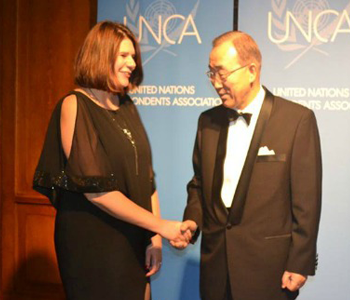by Tes Silverman | Aug 9, 2016 | 2016, Sports, Tes Silverman, World Voice, Youth, Youth Programs
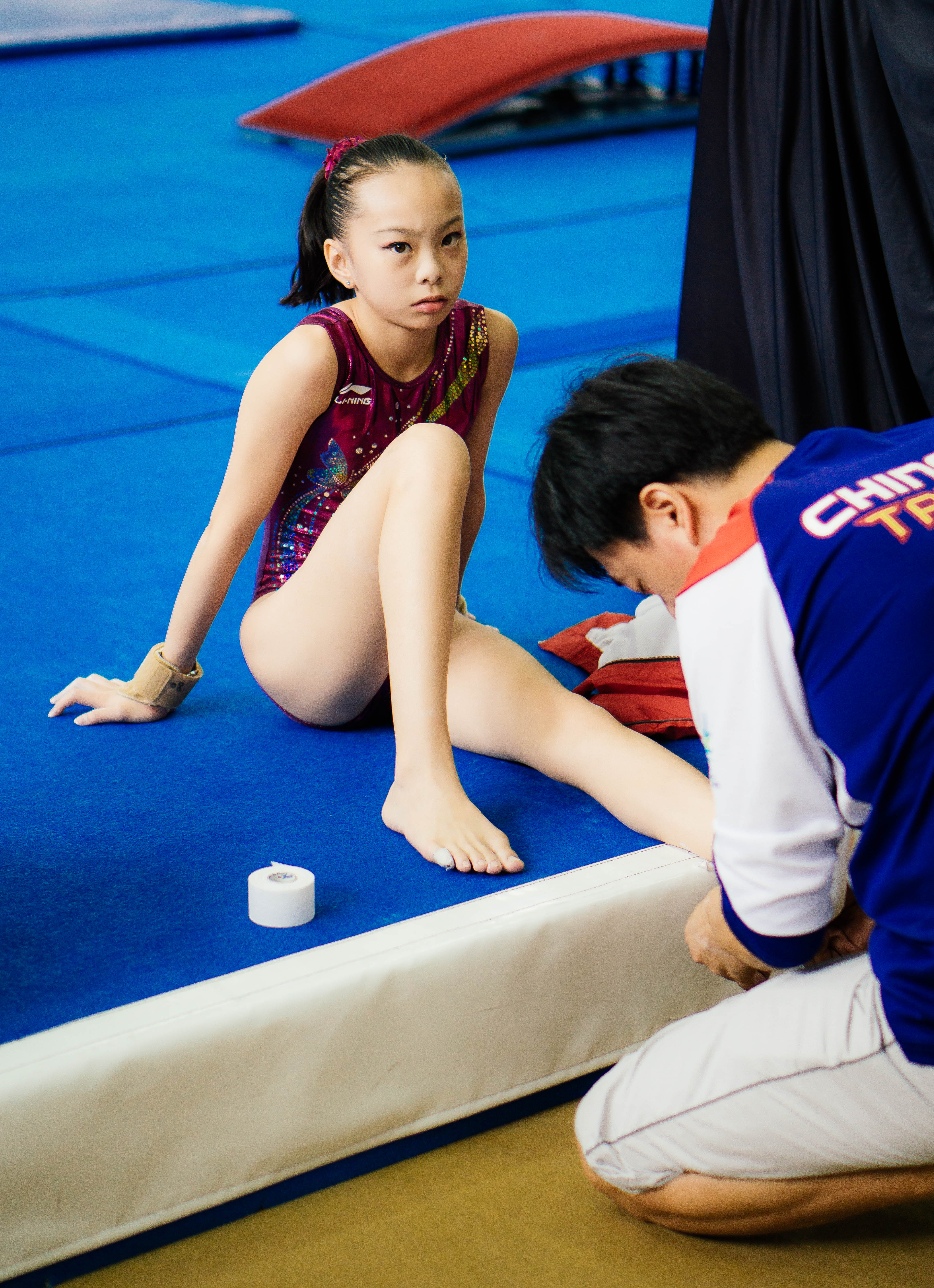
2014 Lake Macquarie International Children’s Games in December 2014.
How far would you go for your child to help him/her win a competition? Competitions are meant to establish sportsmanship, confidence and winning spirit, but in China, the idea of competition is taken to another level. With the 2016 Olympics in Rio underway, the idea of how much training is too much, when it involves a chance at qualifying for the Olympics, may give one pause for thought.
A video has been attracting attention that has stirred some controversy of how children are being trained for the Olympics in China. The video depicts children as young as 5 being subjected to harsh exercises which could be seen as being over the top. The children are screamed at, told to hang on pull-up bars for what seems like an interminable amount of time, only to be chastised if they resist or cry. My initial reaction to this video was one of horror. How was this allowed? Why was this considered “training” when to me it seemed like punishment?
The video is below.
https://www.youtube.com/watch?v=cEvW2ZzcEUs
My husband and I are familiar with training for a sport since my daughter was a competitive figure skater from ages 5 to 13. We were all new to the sport, but one thing we did know, we were supporting our daughter because she wanted to do this, not us. Her initiation with skating stemmed from seeing Michelle Kwan on a segment of the PBS cartoon show, “Arthur”. She was mesmerized by how beautifully she skated and told us that she wanted to be just like her. She even went so far as to buy a book about Michelle Kwan to read about her life and how she got started with figure skating.
While we wanted to support her wish, we also told her that it involved a lot of hard work. We weren’t trying to discourage her, but we also wanted to make sure that she knew what she needed to do to accomplish her goal. I can say that part of the attraction was being able to wear beautiful outfits for competition, but Shaina would realize how much work was involved in trying to be a competitive figure skater. It wasn’t just the sport that drew her in, it was the beauty of how one’s dream to succeed was a product of hard work and commitment.
Training for figure skating consisted of waking up at 5 AM twice a week to get to the rink at 6 AM and practice with her coach from 6-7:30 AM before school, as well as Saturdays & Sundays from 12:30 PM – 3 PM. Getting up at 5 AM was not always that easy, but my husband and I committed to making it a family affair. That meant waking up with her at 5 AM, being with our daughter during every practice, every competition, massaging every aching back and leg cramps that she experienced for eight years. At the age of 12, her Coach sat us down to discuss her future in this sport; either to go on the Olympic track or continue to compete regionally. While Shaina loved the sport, she knew that being on the Olympic track was not for her.
For the children depicted in this video, the training regimen can be viewed as harsh, if not tortuous by outsiders. Scenes depicted on the video show a child being pulled off the bar or bending one’s back so far over that it could be seen as torture. These children seem to be at a great disadvantage since they can’t fight back, and knowing the sacrifices their parents have made for them, they wouldn’t. The parents of these children place them with these trainers with the hope that their child would be the one of the lucky ones to qualify for the Olympics. It should be noted that this level of training seen on the video may not be the norm in China, but it should give one pause for thought.
The Olympics is a universal symbol of excellence and any child who dreams of achieving a medal resulting from hard work and commitment deserves that chance. Every parent, regardless of race and culture, wants the best for their child and I am not any different. I understand that given the chance, I would do everything I could to help my child achieve her dream, not mine. My hope is that this video will be a reminder that the road to the Olympics is not be about the medals, but the child’s dream of being the best they can be for himself/herself.
This article here has ignited some thought.
This is an original post to World Moms Network by World Mom, Tes Silverman in New York, USA.
Photo Credit: Moetaz Attalla via Wikimedia Commons

Tes Silverman was born in Manila, Philippines and has been a New Yorker for over 30 years. Moving from the Philippines to New York opened the doors to the possibility of a life of writing and travel. Before starting a family, she traveled to Iceland, Portugal, Belgium, and France, all the while writing about the people she met through her adventures. After starting a family, she became a freelance writer for publications such as Newsday’s Parents & Children and various local newspapers. Fifteen years ago, she created her blog, The Pinay Perspective. PinayPerspective.com is designed to provide women of all ages and nationalities the space to discuss the similarities and differences on how we view life and the world around us. As a result of her blog, she has written for BlogHer.com and has been invited to attend and blog about the Social Good Summit and Mom+Social Good. In addition, she is a World Voice Editor for World Moms Network and was Managing Editor for a local grass roots activism group, ATLI(Action Together Long Island). Currently residing in Virginia Beach, VA with her husband, fourteen year-old Morkie and a three year old Lab Mix, she continues to write stories of women and children who make an impact in their communities and provide them a place to vocalize their passions.
More Posts - Website
Follow Me:





by Coretta Vermeulen | Aug 8, 2016 | Europe, Netherlands
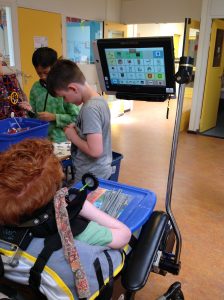 Although budget cuts mostly mean changes for the worst, sometimes they turn out to be a blessing in disguise.
Although budget cuts mostly mean changes for the worst, sometimes they turn out to be a blessing in disguise.
At the start of the 90s the government had to cut down the costs of special education. I was learning to be a teacher, when a project named “Together To School Again” was a much talked about topic in the Dutch school system.
It was brought to us as “progress”, of course, and it was backed by all kinds of educational specialists, but received with a lot of resistance in teaching land. After all, WE were the ones executing the damn monstrosity.
The goal was to keep children with disabilities-in-the-broadest-sense (so, from hearing difficulties to behavioral problems) in normal schools as much as possible, with extra help from special education teachers/therapists, or remedial teachers, who then became full time class assistants. Another goal was to keep the classes small, 25 children max. Only the really difficult ones would go to special education schools.
I didn’t really get all that resistance from my (future) colleagues. I knew very well that this whole charade was not educational progress, but budget cuts, but I also felt that this could turn out okay. In fact, I believed it should be normal to have a society where we include all people, and an educational system that would work for all sorts of children: refugees who don’t speak the language, children from war zones, children who roll instead of walk, children who talk with their hands instead of their mouths, children with narrow boundaries and children with overly wide boundaries, well, you catch my drift. And mind you, ADHD was still a rare symptom, just like gluten allergy, and autism was “just” autism. And they were illnesses, causing behavioral problems in class.
Fast forward to today.
Inclusive education has become the new norm, and the new normal. We have so much more, refined knowledge of and information about the abovementioned diseases (and the ones added since). We learn more and more that their symptoms might as well be the ways humanity adapts to different energies, different vibrations. Indigo children, crystal children, rainbow children, so many beautiful names. We begin to understand that in addition to the downsides of special needs kids, there are many plus sides too. Their creative thinking, their wisdom, the authenticity of these special kids is amazing and should not be restrained – it should be encouraged. We learn that being outside, playing in the dirt, playing in general, having enough physical exercise and a nutritious meal is key to a happy life and happy offspring. We learn that “not being normal” is actually quite normal.
The concept of inclusion is also being applied to special care facilities, like the one our son is attending, called “classroom on wheels”.
The founding father of this concept is Roeland Vollaard. Working as a physical therapist in a special care facility, and fostering a boy with severe disabilities during weekends and vacation periods, his dream of including his clients in the real world began. He got promoted to manager of an orthopedagogical daycare center for children aged 3 to 14, and met a mother who had a deep wish for her son to be around healthy kids. She noticed her son reacted totally different around her other kids than at the daycare center. They started an experiment at the school of her other children: her special kid attended classes with kids his own age, with help and care of personnel from the daycare center. Needless to say, the experiment worked out perfectly.
Children with severe multiple disabilities gain their support mostly in special facilities. There is hardly any contact with non-disabled peers. This is called segregation (right in the diagram).
Classroom on Wheels provides schooling, short-stay (sleep-over) possibility and home support. This is called INTEGRATION (bottom left).
Schooling happens in separate classrooms, but inside a “normal” school complex. Younger children attend a primary school; the older children join a high school. Working together with all parties means INCLUSION (bottom right).
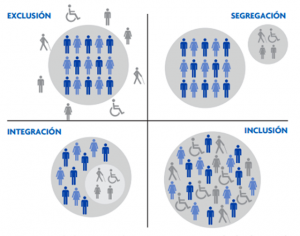
Source: translated from the website http://www.klasopwielenalkmaar.nl
We kind of stumbled upon the opportunity to be part of this. We met when Roeland was still manager of the daycare center, due to our son’s physical problems (this was just after his accident and rehab). He went somewhere else, but was sick all the time, and we needed home support. Roeland applied. He came cycling 15 km to be at our place at 6.30 am, take care of our son so I could take care of our daughter, put him on the bus and cycle back, in all weather conditions, never too late, never too early. He probably saved us and gave us hope, when we had lost everything.
And then, when he started his Classroom on Wheels, our son was able to slide right in.
Making good use of interns and volunteers, sponsoring, low overhead costs, new technology that needs testing, and keeping a small paid employees list (but still being able to guarantee one-on-one supervision), the Classroom can provide the latest technology and know-how, the best equipment, excellent care, and a lot of love. And besides hanging out with their disabled friends, they go out for walks to the mall, the library, the park with their healthy pals, attend and give presentations, do art work together, listen to stories, have recess together. And though it was frightening for a lot of the “normal” children at school, now they got to know the Classroom kids, read to them, look into their eyes and know that deep inside, behind the frozen faces, inside these deformed bodies that are being denied to do what other kids take for granted, behind the spasms and the epilepsy and the goofy screams, that deep inside, there is a child yearning for respect, love, communication, interaction. To be really heard, to be really seen. Just like they do.
And besides that: what “normal” kid can say he’s got a wheel-chair-drivers-license, and an elevator-utility-using-permit, and a drool-wipe-diploma?
Inclusion works both ways……
The Classroom just celebrated its 5th year anniversary, and the benefits are really starting to show.
Not only on a personal level for all involved, but even the Ministry of Education has shown interest, as well as organizations surrounding special care children, because it is proof that cost reducing does not have to mean care reducing.
Luckily, our main man Roeland, is not a sell-out……..
Our son Fygo is linked to a 6th grade group. Together they made a presentation about the eye tracking computer he is learning to use. In technology class, they made an arm stand for him from K’nex. In world orientation class, he loves to listen to stories about other countries, other cultures, loves watching nature movies, especially about wild animals, they stimulate him to use his computer for the better, and HE DOES IT for them.
Until it is time for feeding, diaper changes, physical therapy, musical therapy, showering, resting. Then he goes back to the calm of his own classroom and the love of all the people working there.
He’s happy and thriving.
How privileged we are…….
I'm Coretta, a former teacher. I'm married, and the mother of an 18 year old son, a 9 year old daughter and a 10 year old son, and bonus mom and grandmomship. Our 10 year old son Fygo has brain damage due to near drowning and has no use over his body, except for his eyes and ears. He lives with us at home and visits a special school. We try to live "a normal live" as much as possible.
More Posts

by To-Wen Tseng | Aug 5, 2016 | 2016, Breastfeeding, Health, North America, Nutrition, The Americas, To-Wen Tseng, USA, World Motherhood
 Every woman has a breastfeeding story.
Every woman has a breastfeeding story.
If you ask me, I’d tell you how I became a mother at the center of a lawsuit about the rights of women breastfeeding in the workplace, and why I turned down the financial compensation in my lawsuit.
If you ask my mother, she’d tell you why she never breastfed her children. That was before the Baby-Friendly Hospital Initiative took place, and the hospital staff gave her baby a bottle right after she gave birth.
If you ask my grandmother, she’d tell you how she breastfed her two toddler sons on a refugee boat and saved their lives.
It is because of my grandma’s experience, my mom’s experience, and my own experience that I am now part of my local breastfeeding coalition that works everyday to support moms reaching their breastfeeding goals and walk moms through it when breastfeeding becomes difficult.
We celebrate breastfeeding all year long, especially during the first week of August—it is World Breastfeeding Week!
A Sustainable Solution
In 2015, the world’s leaders commented to 17 goals aimed at ending poverty, protecting the planet and ensuring prosperity. Together, they formed the sustainable development goals. The theme of this year’s WBW is “a key to sustainable development.” It reminds people that breastfeeding is a key element in getting us to think about how to value our wellbeing from the start of life, how to respect each other and care for the world we share.
Breast milk is a secure source of nutrition, always ready and safe on a daily basis, and in any emergency or natural disaster. Breast milk is the ultimate sustainable resource. It requires no packaging or processing, is local and fresh, and costs the nursing mom only a few extra calories a day.
Multiple scientific studies reveal that breastfeeding has numerous lifelong health benefits for mom and baby. Breastfeeding lowers a mother’s risk of developing type 2 diabetes, breast cancer and ovarian cancer. Breastfed babies have lower risk of serious health conditions such as asthma, obesity, childhood leukemia and sudden infant death syndrome.
These benefits save health dollars, which shouldn’t be a surprise. That says breast is the best, not for the moms or the babies, but for the Earth and all mankind living on the planet.
Everyone has a part to play in achieving the sustainable development goals by 2030.
Everyone should care about the breastfeeding movement, even if you are not part of it.
A Human Right
The mention of “breastfeeding movement” might conjure up such images as a activist sit-in or a protester holding a “free the nipple” sign. But there’s more to the breastfeeding movement than its squeakiest wheels, and even women who have no intention of ever breastfeeding, or men who have no intention of ever having kids still have a personal stake in this issue.
On its face, the issue of breastfeeding rights might seem like a fight about what’s the best way to feed a baby. It is not. Surely it’s long been established that breastfeeding is beneficial, but that’s not the point here.
The fight for breastfeeding rights isn’t about the milk that’s in the breast; it’s about the woman who’s attached to them. Breastfeeding rights is something everyone should care about, even if you don’t breastfeed, and even if you are not a mom. Breastfeeding rights is a women’s rights issue, and women’s rights are human rights. It is something that concerns all women, and men with souls.
Breastfeeding is about choice. In the United States, more than 90 percent of women start breastfeeding their babies at birth. They know breastfeeding is best for their babies and themselves. Sadly, most women report not meeting their own breastfeeding goals and quit before they really wanted to. Many challenges, including not being supported to breastfeed after returning to work or being shamed for breastfeeding in public, make continuing to breastfeed harder.
What matters is that women have the right to choose to breastfeed, are legally allowed to do so in public, and are legally supported to do so at work. People who never intend to use their own breasts to feed a baby can and should still support the rights of women who do.
Support breastfeeding is support human rights and the global goals for sustainable development. So happy World Breastfeeding Week! Let’s work together to achieve the sustainable goals by making the annual WBW celebration more than a week-long effort.
Do you, or did you, breastfeed your kids? Is breastfeeding socially and legally supported where you live?
This is an original post to World Moms Network by To-Wen Tseng of California, USA. Photo credit: Ewa Samples Photography.
by Mamma Simona (South Africa) | Aug 4, 2016 | 2016, Africa, Change, South Africa, World Motherhood
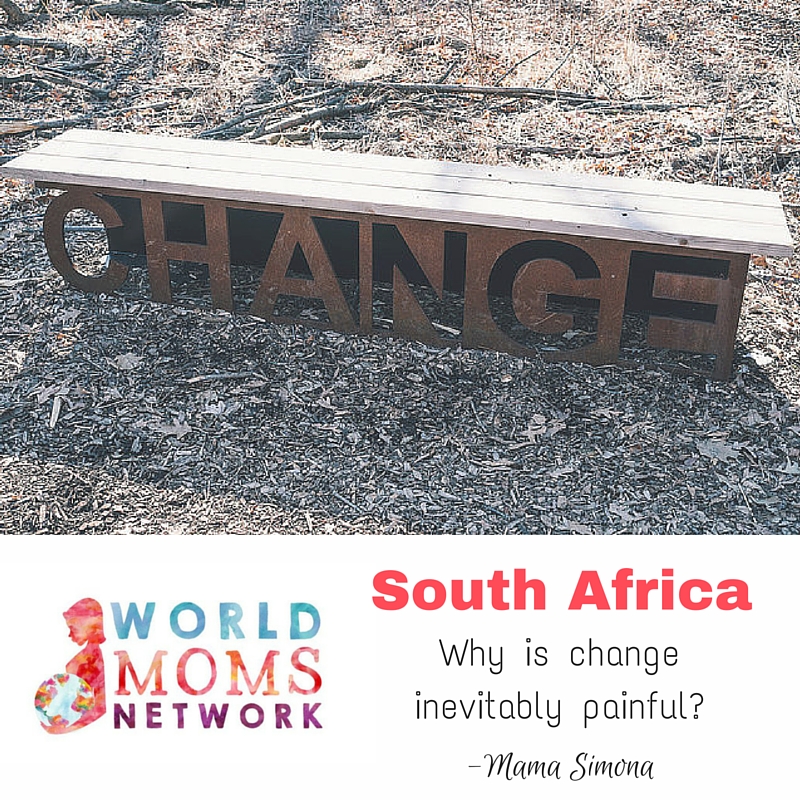
Change is painful. The myriad of cliches, affirmations, memes and inspirational quotes on this subject are testament that this is a widespread problem. No one knows this better than us mothers. From the moment of conception, change happens at an incredibly fast pace. Our babies go from helpless newborns to defiant toddlers in the blink of an eye. Blink again and they’ve left home to start families of their own!
Not only do our offspring change, but we do as well. At every stage we must adapt to new demands. I’m not the only mom who actually wanted her child to grow, change and reach milestones as soon as possible. What I wasn’t prepared for was the sense of loss that accompanied each change. In a strange way, it was as if I was mourning the baby that had been replaced by the toddler, the toddler replaced by the child, and so on.
My son is now 23 years old. Two years ago he moved away from home to live abroad with his girlfriend (now wife!) and her family in Germany. Thanks to Skype, we still talk often, but this change has been the toughest one for me so far. As grateful as I am for my in-laws’ generosity in giving my son the opportunity to live and study in Germany, I can’t help feeling sad that my son is now more part of their family than ours. Also, I’ve had to come to terms with the idea of not living close to (eventual) grandchildren.
Don’t get me wrong, as a mother, all I truly care about is that my son is healthy and happy (which he is). This has been a very positive change for him, and I am incredibly proud of the awesome young man he has become. I’m the one who wasn’t quite ready for this change, even though, objectively, I know it’s the best thing for him.
This change from mother to mother-in-law really is my most challenging change so far. I have a new understanding for what my late mother-in-law must have felt when my husband told her he was going to stay in Cape Town with me, instead of moving to Durban with them. Whether in a different city or on a different continent, the result is the same – it’s simply impossible to be present in the lives of your child and possible grandchildren.
It took my mother-in-law over 20 years to accept me, and I suffered a lot in that time. I vowed to never put my daughter-in-law through what I went through. Yet, if I’m being scrupulously honest, there’s a little part of me that resents the fact that my son has moved to a different continent, and that he was willing to learn German, but I never managed to get him to learn Italian, my own mother tongue.
Change is as inevitable as death and taxes. It is counter-productive to strive to keep things the way they are. It is much better to embrace each change as a new adventure. The problem is that I’ve never been adventurous!
How do you deal with the stress caused by changes in your life? Do you have any advice for me, to help me overcome my resentment?
This is an original post for World Moms Blog by Mama Simona from Cape Town, South Africa.
Photo credit: Conal Gallagher / Flickr.
Mamma Simona was born in Rome (Italy) but has lived in Cape Town (South Africa) since she was 8 years old. She studied French at school but says she’s forgotten most of it! She speaks Italian, English and Afrikaans. Even though Italian is the first language she learned, she considers English her "home" language as it's the language she's most comfortable in. She is happily married and the proud mother of 2 terrific teenagers! She also shares her home with 2 cats and 2 dogs ... all rescues.
Mamma Simona has worked in such diverse fields as Childcare, Tourism, Library Services, Optometry, Sales and Admin! (With stints of SAHM in-between). She’s really looking forward to the day she can give up her current Admin job and devote herself entirely to blogging and (eventually) being a full-time grandmother!
More Posts - Website
Follow Me:

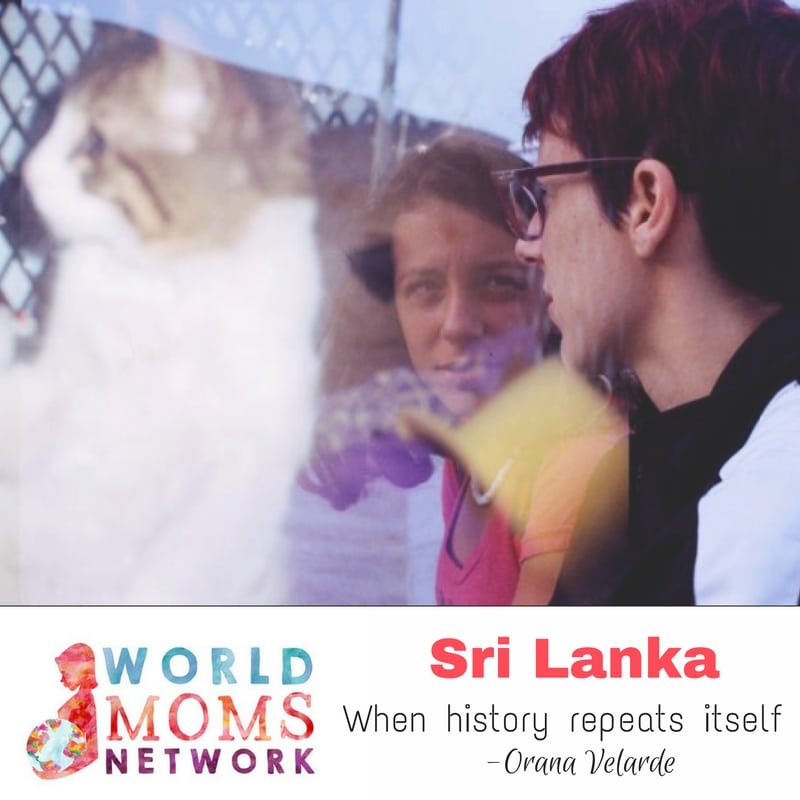
by Orana Velarde | Aug 3, 2016 | Adolescence, Asia, Sri Lanka
I haven’t hugged my oldest daughter in almost three years. It will be three full years in October. I will never forget the last hug we had at the immigrations desk in the Phuket airport when the officials were checking her travel documents.
She was happy to be going back to see my sisters and her friends and I knew it was the best plan of action for her. Now all that has worn off and I just miss her terribly.
There are situations in my life that make it hard for me to go and visit so I just wait and wait for the day that it will magically happen.
The little ones see their sister on skype once in a while but it gets harder for me every time. The smallest one asks when we can go ride horses with my sisters; one of them is a junior jockey and the other wants to be a veterinarian. My son wants to visit the city where his big sister lived as a baby in the mountains of Peru.
I sent my daughter off on a plane to Peru on her own when she was almost 15.
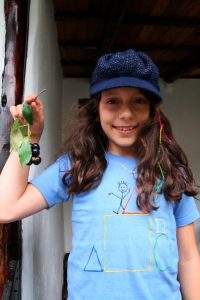
The author’s daughter when she was 10 years old.
My mom sent me off on a plane to Peru on my own when I was 17 and I since then (21 years) I have seen her for two weeks every year at most. I though that this experience would make me tougher for the situation with my daughter but I was wrong; what it has done is make me feel what my mother felt. This feeling is a complete emotional disaster.
I used to write hate letters to my mom for sending me away. My mom did it in the hopes of giving me a more stable life, my daughter asked to go back because she missed her old life. She is stronger than me, definitely smarter than me and I respect that so much.
She wants to be a musician and an orchestra conductor. I couldn’t be more in awe of that. She plays the piano piece she is practicing with for her music college exam over skype sometimes. She does so well. She is excited about going to the conservatory and studies hard to get good grades. She is lucky to not have as many hang ups as me.
Every few months I get messages from people saying how they ran into her and what a wonderful and beautiful young woman she is. My mom used to get messages about how irresponsible and crazy I was, with an unhealthy dose of drug use that was obvious in my demeanor. I even get messages that say, she isn’t crazy like you were.
Thankfully even when history repeats itself it isn’t all exactly the same. I am happy about that. I am happy she feels comfortable in the place where she is at; I never did and I wouldn’t wish that on anyone.
This is an original article by World Mom Orana Velarde in Sri Lanka







 Although budget cuts mostly mean changes for the worst, sometimes they turn out to be a blessing in disguise.
Although budget cuts mostly mean changes for the worst, sometimes they turn out to be a blessing in disguise.

 Every woman has a breastfeeding story.
Every woman has a breastfeeding story.





